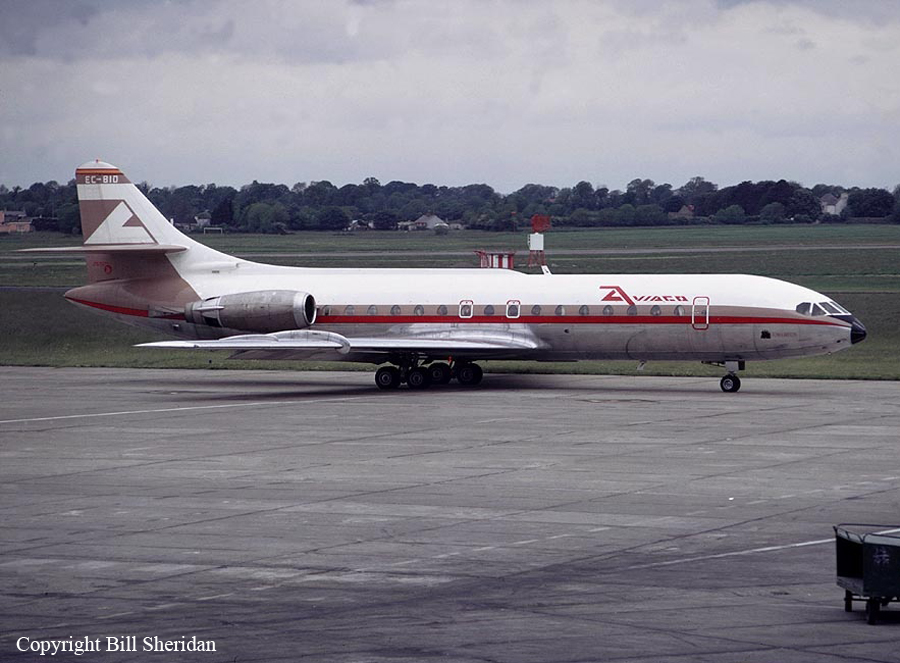Country
Operator Image

Crash of a Douglas DC-9-32 in Vigo
Date & Time:
Mar 21, 1994 at 0917 LT
Registration:
EC-CLE
Survivors:
Yes
Schedule:
Madrid - Vigo
MSN:
47678
YOM:
1975
Flight number:
AO260
Crew on board:
6
Crew fatalities:
Pax on board:
110
Pax fatalities:
Other fatalities:
Total fatalities:
0
Aircraft flight hours:
38224
Aircraft flight cycles:
41155
Circumstances:
On final approach to Vigo Airport runway 20, the crew encountered foggy conditions with a visibility limited to 1,500 metres. The aircraft descended below the glide and the left main gear struck an element of the approach light system located 100 metres short of runway threshold. The aircraft then landed 50 metres short of runway, causing both main landing gear to collapse. The aircraft slid on its belly for about 580 metres before coming to rest, bursting into flames. All 116 occupants were rescued, among them 21 were injured. The aircraft was destroyed.
Probable cause:
Wrong approach configuration on part of the flying crew who led the aircraft descending below the glide in limited visibility conditions. The crew's attention was focused on the visual contact with the runway and the pilots ignored the alarms that was sounding in the cockpit.
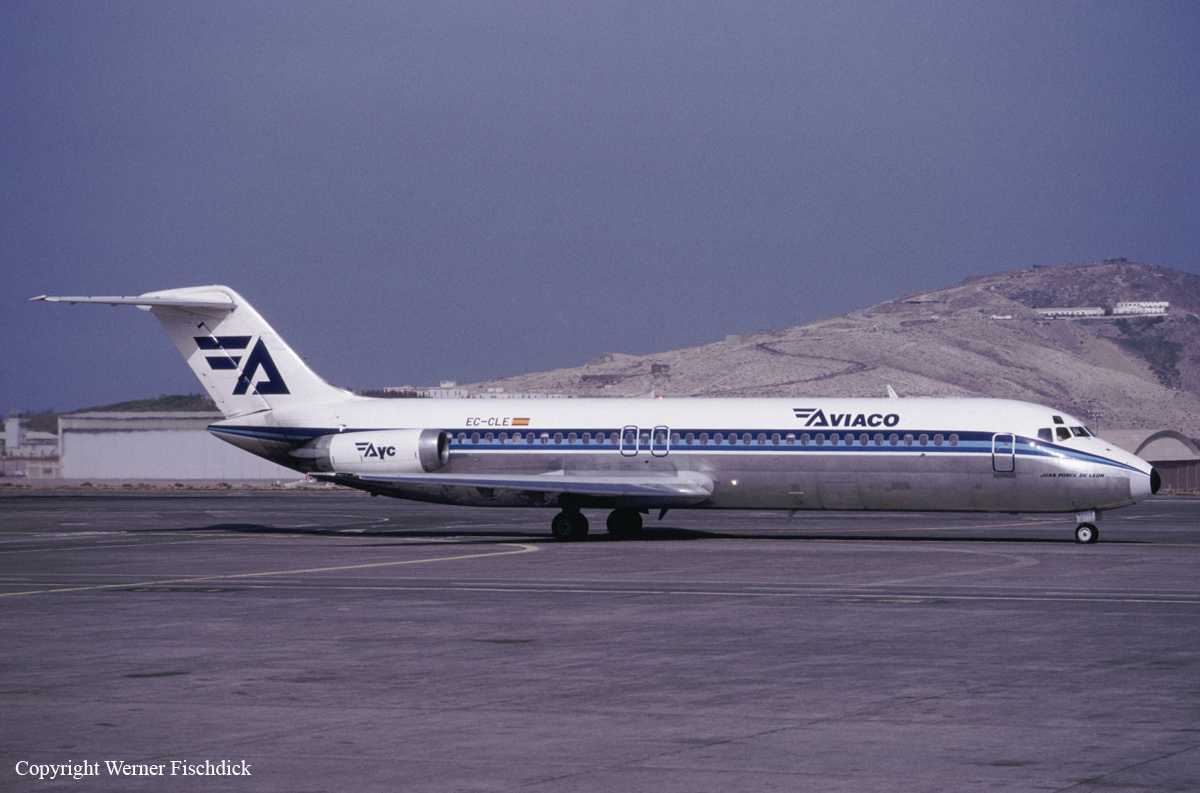
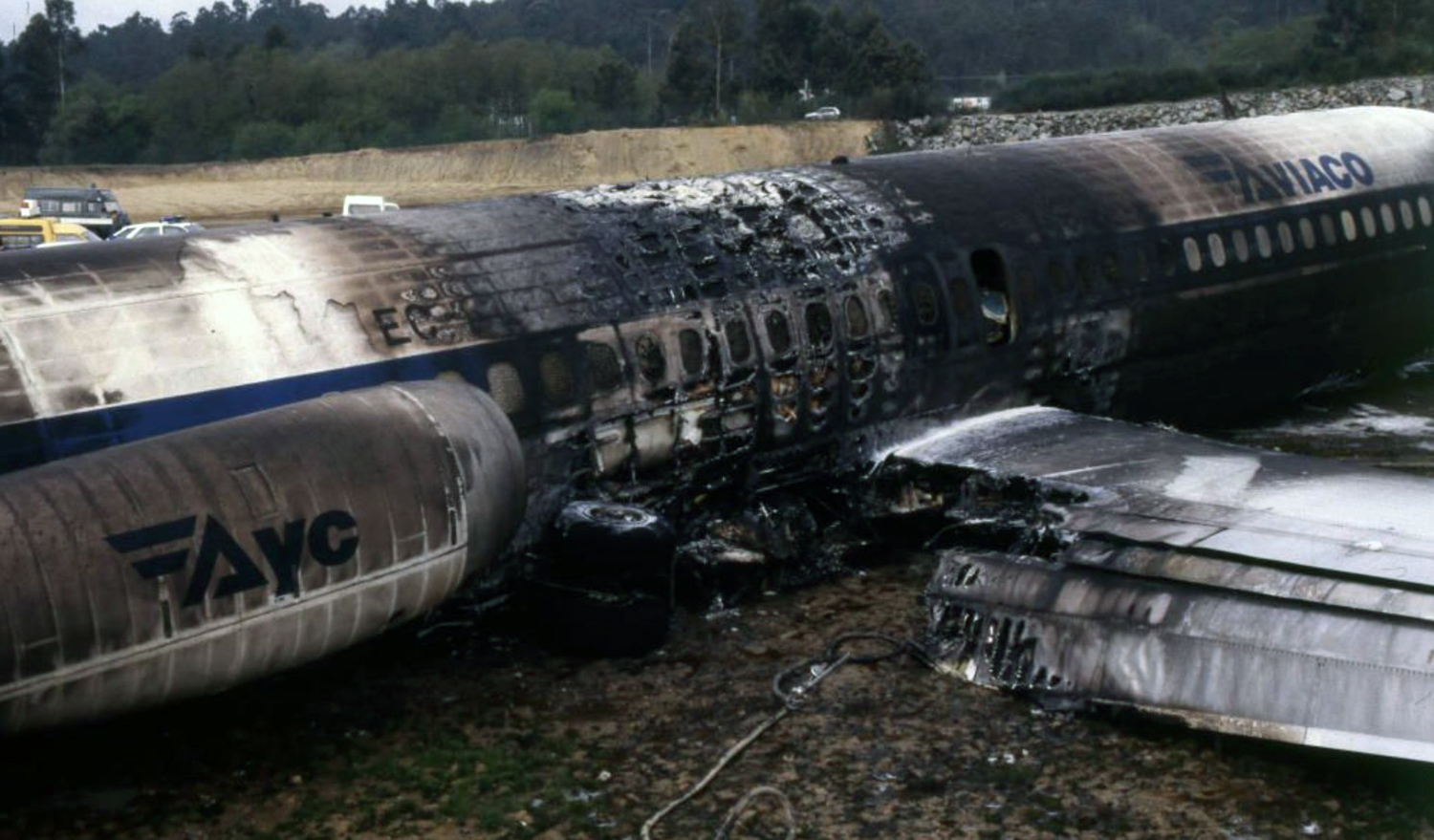
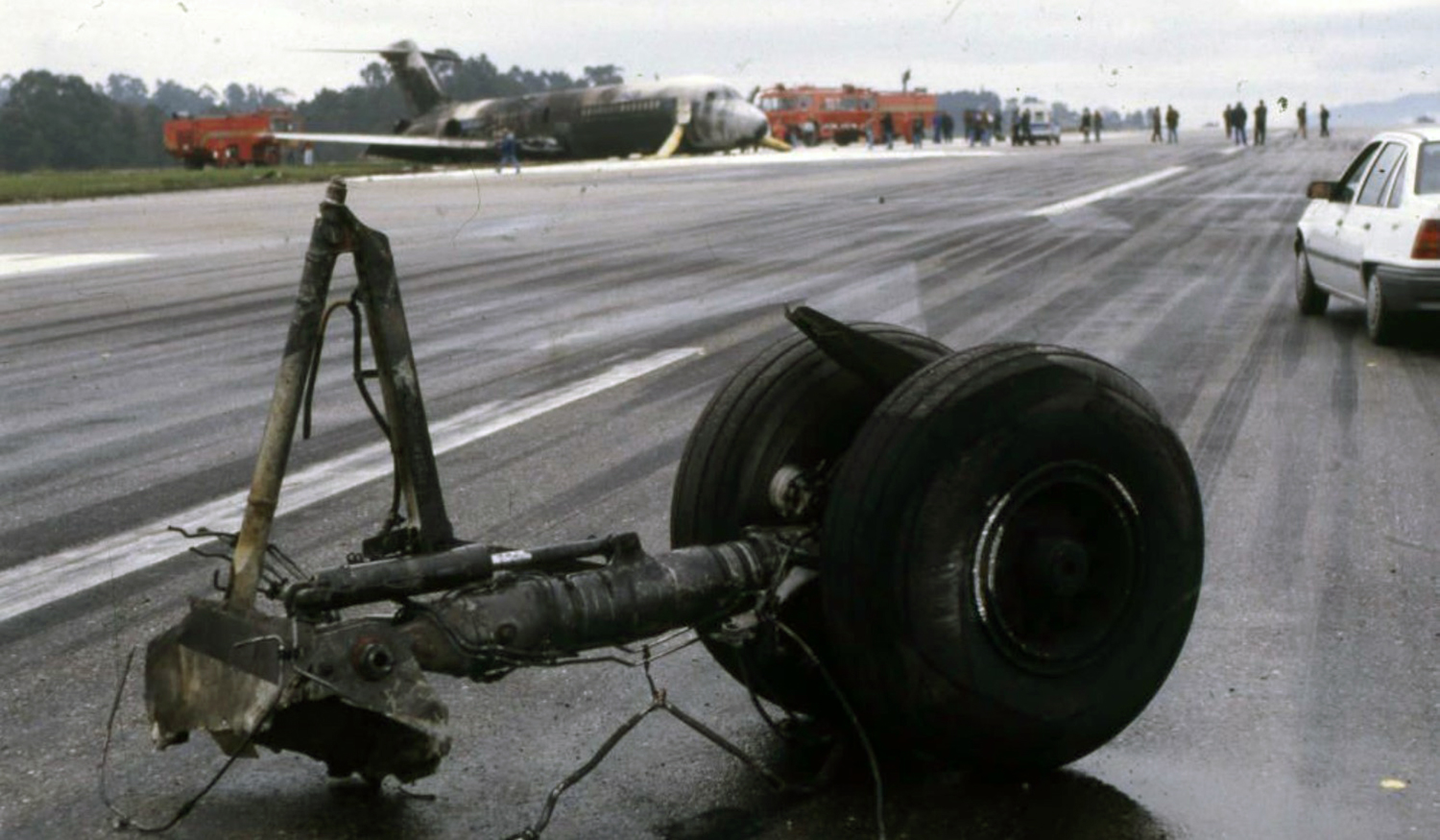
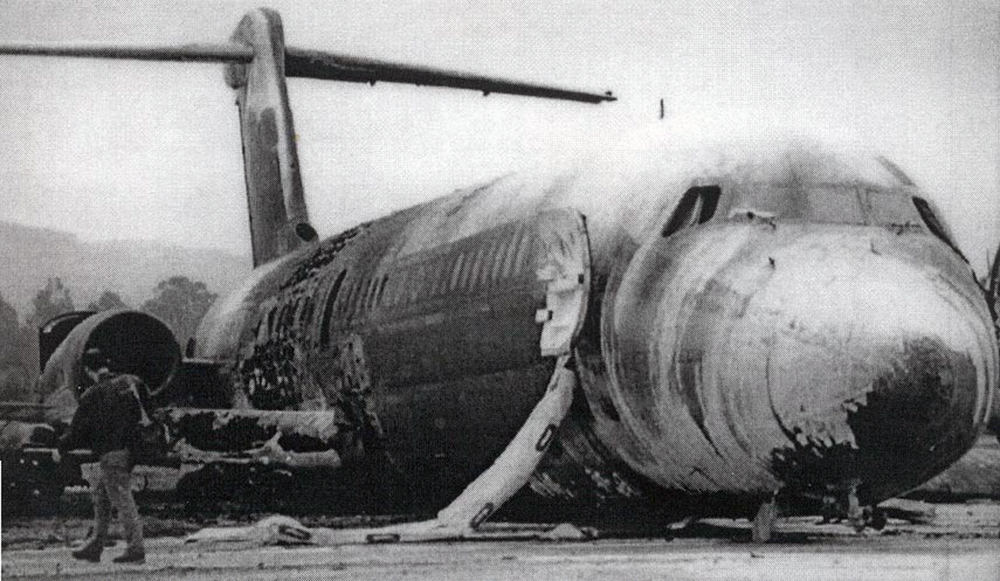
Crash of a Douglas DC-9-32 in Grenada
Date & Time:
Mar 30, 1992 at 2020 LT
Registration:
EC-BYH
Survivors:
Yes
Schedule:
Madrid - Granada
MSN:
47556
YOM:
1972
Flight number:
AO231
Crew on board:
5
Crew fatalities:
Pax on board:
94
Pax fatalities:
Other fatalities:
Total fatalities:
0
Circumstances:
The crew completed the approach to runway 09 with a tailwind component of 11 knots. The aircraft landed hard 50 metres past the runway threshold, bounced and landed hard a second time 360 metres further. All tires burst and the fuselage broke in two between sections 756 and 760. The aircraft came to rest and all 99 occupants were evacuated, among them 26 were injured, four seriously. A positive acceleration of 4,49 g was recorded on the first impact and 4,79 g on the second impact.
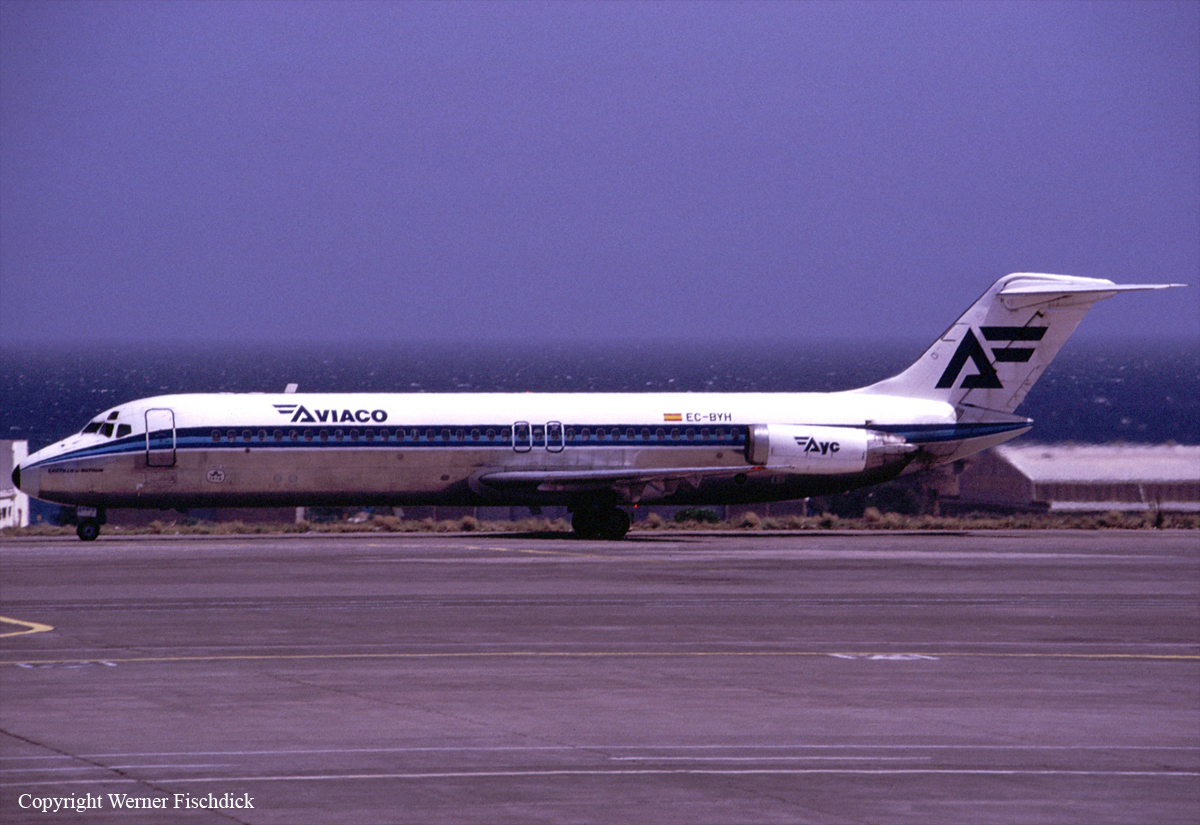
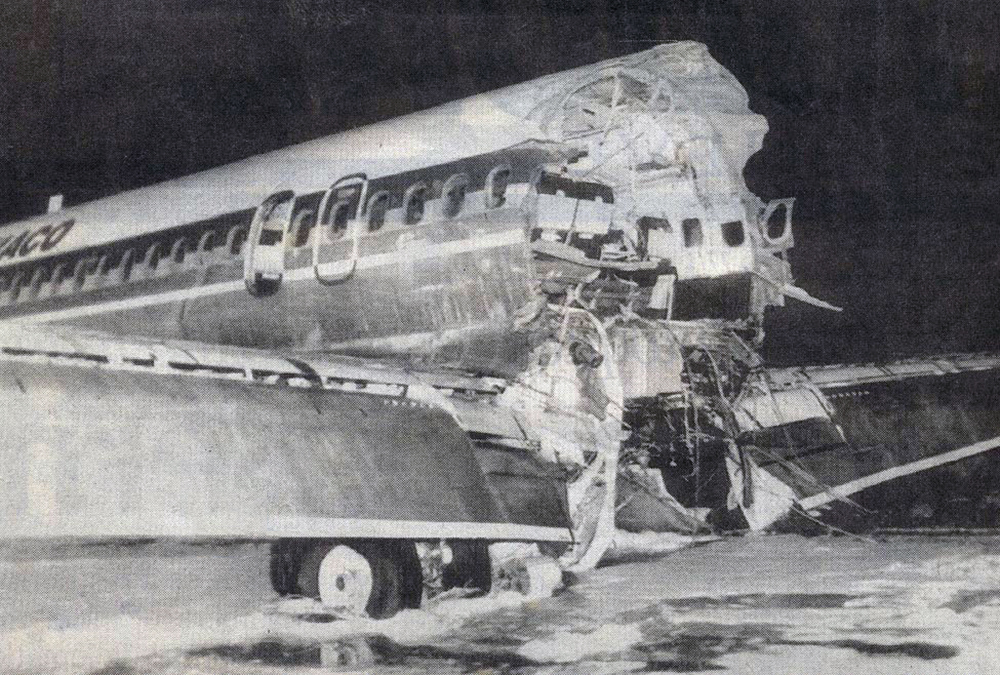
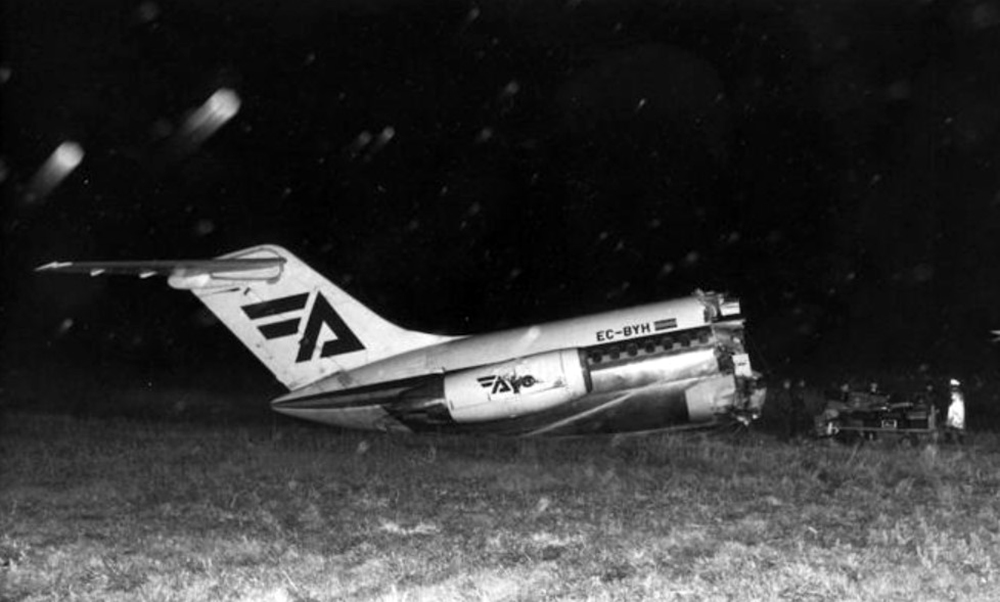
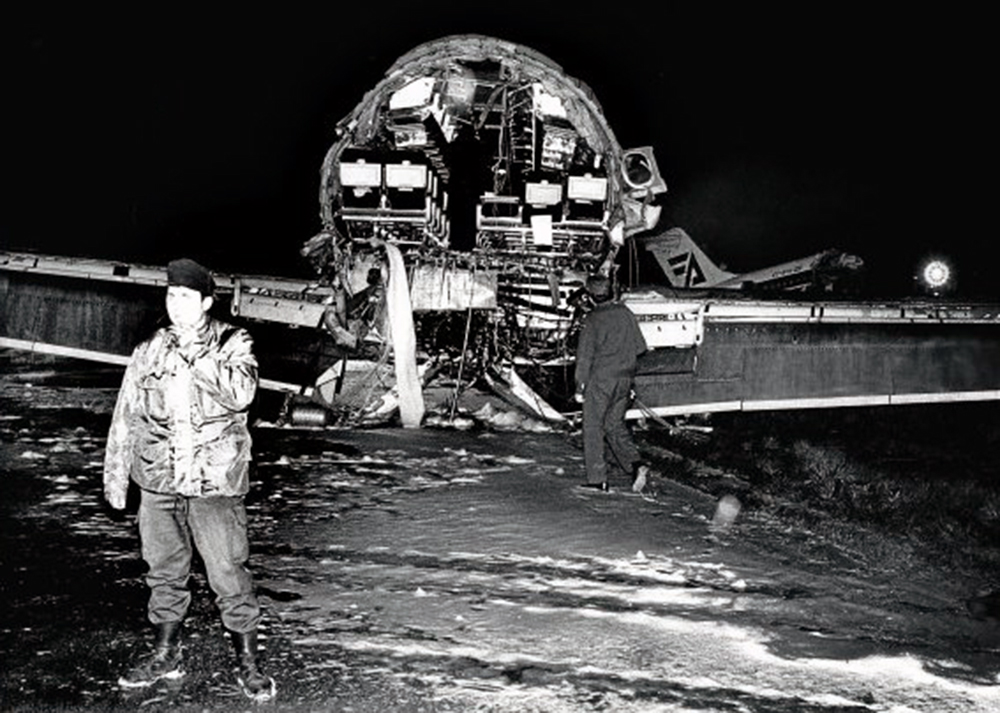
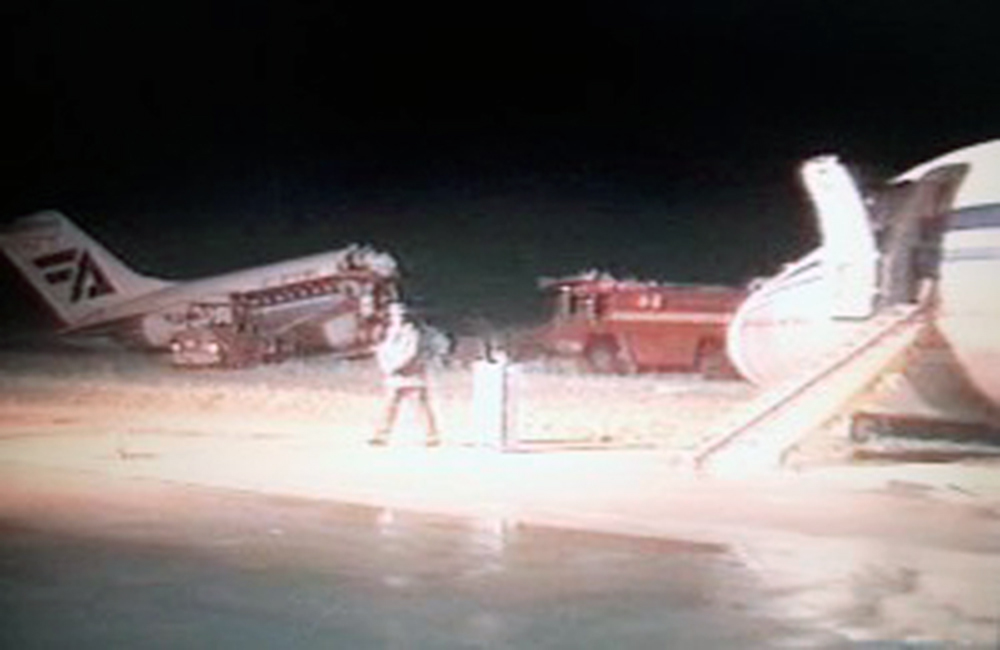
Crash of a Douglas DC-9-32 in Mahón
Date & Time:
Feb 17, 1990 at 2030 LT
Registration:
EC-BIQ
Survivors:
Yes
Schedule:
Palma de Mallorca - Mahón
MSN:
47092
YOM:
1967
Crew on board:
7
Crew fatalities:
Pax on board:
82
Pax fatalities:
Other fatalities:
Total fatalities:
0
Circumstances:
The approach to Mahón Airport was completed by night and poor weather conditions. On final, the crew lost visual contact with the runway and the captain instructed the pilot to initiate a go-around. In a certain confusion, the aircraft continued its approach until it struck the runway surface with a positive acceleration of 3,56 G. The captain took over control, initiated a go-around and decided to return to Palma de Mallorca where a safe landing wa completed. All 89 occupants evacuated safely while the aircraft was considered as damaged beyond repair due to severe structural damages.
Probable cause:
It was determined that the copilot (pilot-in-command) did not understand the captain's instructions to initiate a go-around procedure due to non standard phraseology used by the captain. Poor crew coordination and lack of visibility were considered as contributing factors.
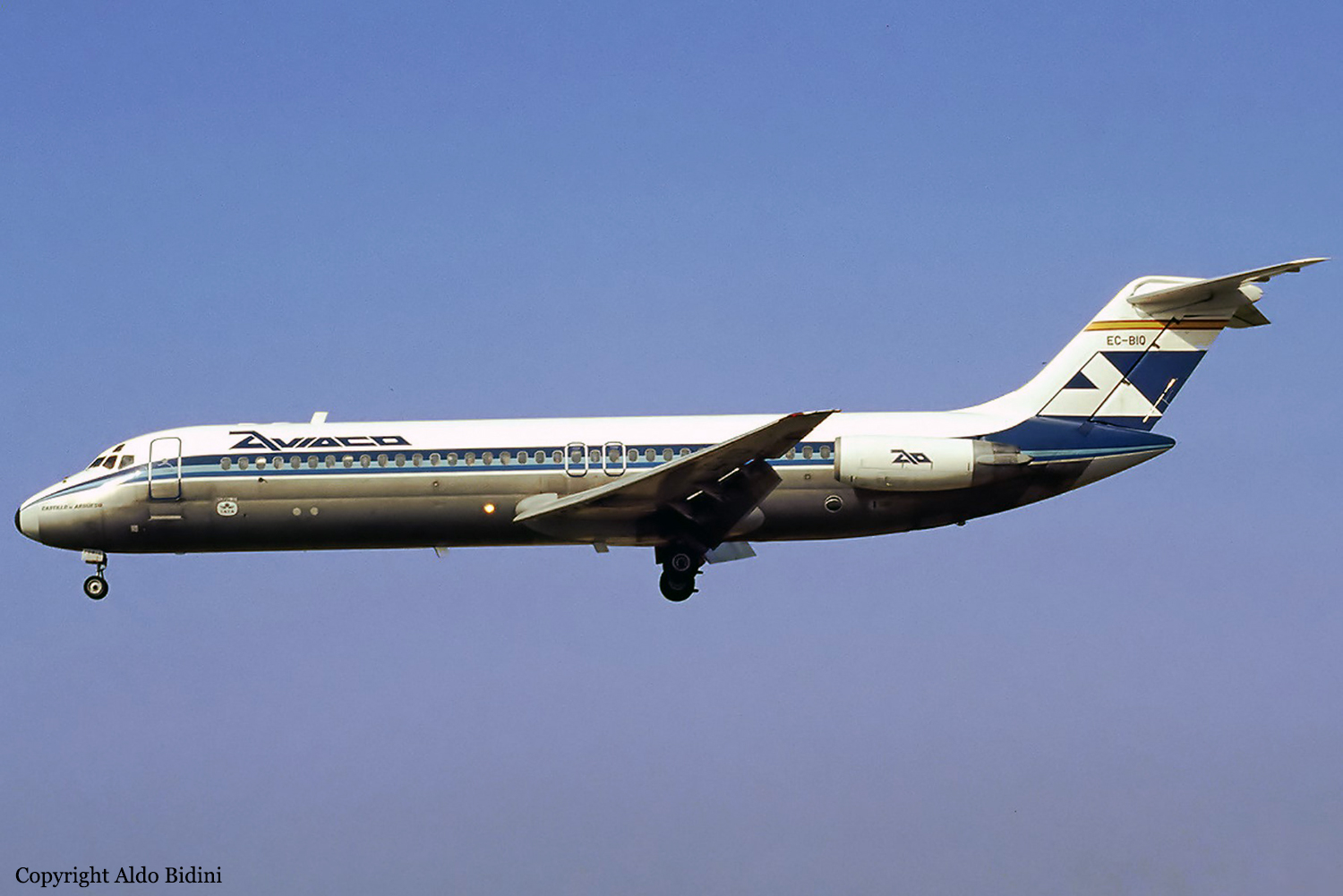
Crash of a Douglas DC-9-32 in Madrid: 42 killed
Date & Time:
Dec 7, 1983 at 0939 LT
Registration:
EC-CGS
Survivors:
No
Schedule:
Madrid - Santander
MSN:
47645
YOM:
1975
Flight number:
AO134
Crew on board:
5
Crew fatalities:
Pax on board:
37
Pax fatalities:
Other fatalities:
Total fatalities:
42
Captain / Total hours on type:
4096.00
Copilot / Total hours on type:
3655
Aircraft flight hours:
20078
Aircraft flight cycles:
17909
Circumstances:
Boeing 727-256 EC-CFJ of Iberia, operating scheduled flight IB350 to Rome, and DC-9-32 EC-CGS of Aviaco, operating schedule AO134 to Santander, crashed on runway 01/19 at Madrid-Barajas Airport. The Boeing 727 had been cleared for takeoff on runway 01 and was at V1 speed. The DC-9 had been cleared to proceed to the holding point at runway 01 through the outer taxiway. The accident occurred approximately at 09h39:29 on December 7, 1983. As a result of the impact and instant fire, the DC-9 aircraft was totally destroyed, dying the whole of its occupants, 5 crew members and 37 passengers. The Boeing 727 aircraft lost almost all of its left wing and main gear of the same side, sliding on the runway about 460 meters, until its final stop, remaining facing the opposite direction of takeoff, on the left edge of runway 01. As a result of the impact and of the spilling of fuel from the left wing, there was an almost instant fire at the time o the crash, which subsequently destroyed the aircraft. 34 passengers and 8 crew members out of the 84 passengers and 9 crew members, survived. 50 passengers and one assistance crew member died as a result of the impact and fire. The conditions of visibility at the airport were of daylight and intense fog.
Probable cause:
The cause of the accident was the unknown incursion of the DC-9 on the runway 01/19 when the Boeing 727 was on takeoff roll. The DC-9 was on the active runway because visibility conditions due to fog, by the zone where the aircraft was taxiing, impeded to the crew obtain sufficient visual references, to determine that, that was not the correct run that they should realize to reach the threshold of runway 01.
Final Report:
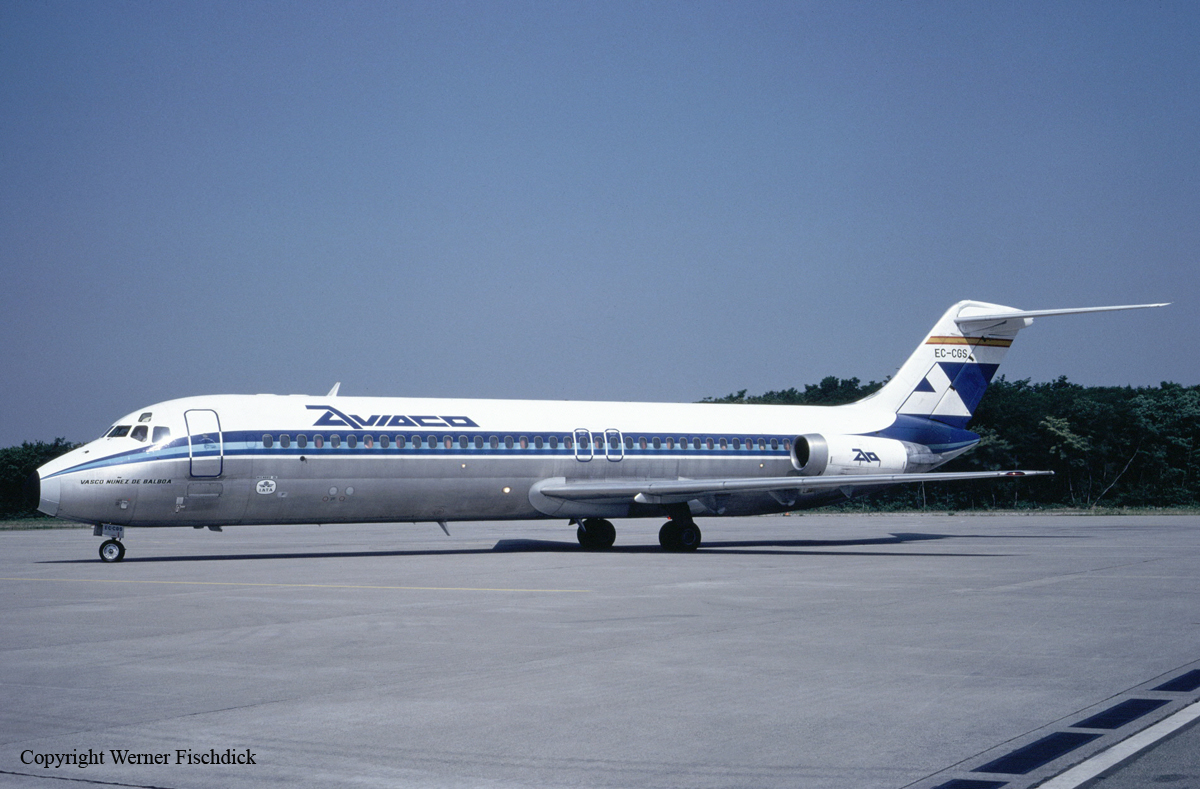
Crash of a Sud-Aviation SE-210 Caravelle 10R in La Coruna: 85 killed
Date & Time:
Aug 13, 1973 at 1140 LT
Registration:
EC-BIC
Survivors:
No
Schedule:
Madrid - La Coruna
MSN:
225
YOM:
1968
Flight number:
AO116
Crew on board:
6
Crew fatalities:
Pax on board:
79
Pax fatalities:
Other fatalities:
Total fatalities:
85
Captain / Total hours on type:
304.00
Copilot / Total hours on type:
997
Aircraft flight hours:
13118
Aircraft flight cycles:
9380
Circumstances:
The Caravelle aircraft took off from Madrid-Barajas Airport at 08:30 GMT and proceeded normally to La Coruña Airport. At 09:14 radio contact was made with La Coruña tower and the flight crew reported 3 minutes away. The tower controller informed the flight that weather at the airport was below minima and that improvement would be slow. The flight crew then decided to hold over Lima Romeo Alpha and said they would report when holding. Shortly thereafter they informed the tower that they would make an approach down to minima to get a more precise idea of the weather and would hold thereafter. The controller switched on the VASIS and at 09:21 informed the flight that visibility was around 350 m, although he could not see the VASIS at the threshold of runway 22. The flight then reported at 3000 feet beginning the approach. At 09:23 the controller reported a visibility of 600 m. At 09:24 the pilot said he would attempt to land, that he was 2200 feet on approach and had not yet entered clouds. At 09:28 ATC reported 800 m visibility, but that a light breeze was coming up and fog was again closing in from the sea. The crew reported to the tower that they had descended to minima. Since the ground could not be seen, they would therefore begin to hold. At 09:32 the flight crew reported holding at 6000 feet and requested to be informed of any change that might take place. At 09:34 the controller reported a visibility of 400 m, that the VASIS was still visible. The flight crew then tried to make another attempt to land. At 09:36 the flight crew reported passing the LRA VOR on approach. The controller answered that the lights of the VASIS were no longer visible and that some fog had collected over the runway threshold. The pilot then decided to resume holding. Weather gradually improved and at 10:20 ATC reported a horizontal visibility of 1500 m and a vertical visibility of 150 m which improved to 250-300 m within three minutes. The pilot acknowledged and said he was leaving 5000 feet for approach. At 10:31 the flight reported passing LRA. At 10:32 the flight reported discontinuing the approach and 6 minutes later the pilot said he was initiating another approach and would report over LRA. At 10:39 the pilot reported over LRA again. Shortly afterward the Caravelle contacted eucalyptus trees, struck the ground and crashed onto several houses. The aircraft was totally destroyed and none of the 85 occupants survived. There were no casualties on the ground.
Probable cause:
Pilot violation of the regulations and instructions governing flight over national territory, and the international standards in force in Spain.
Final Report:
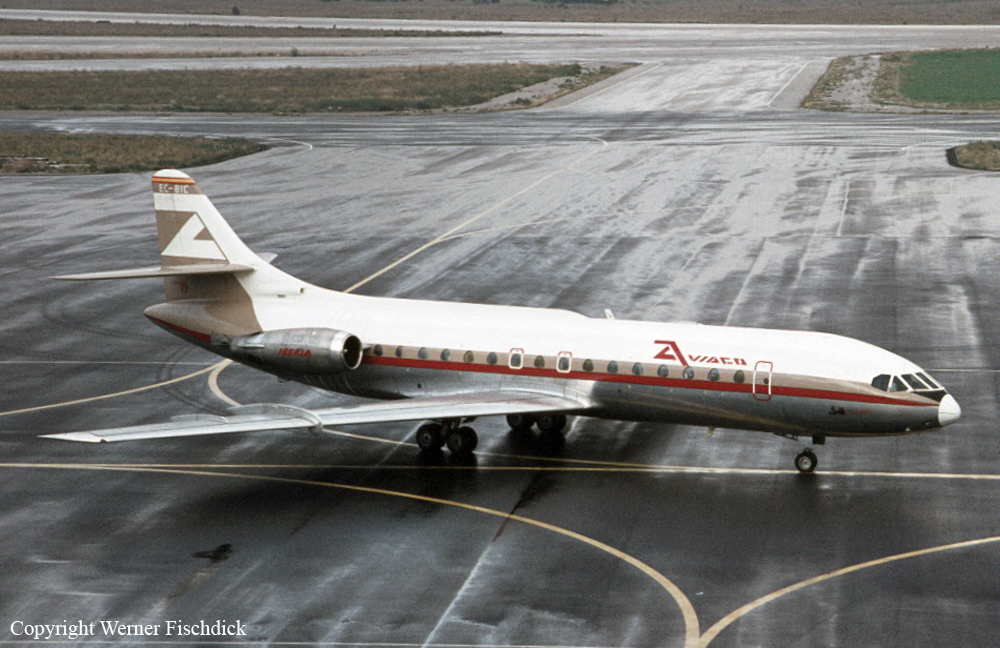
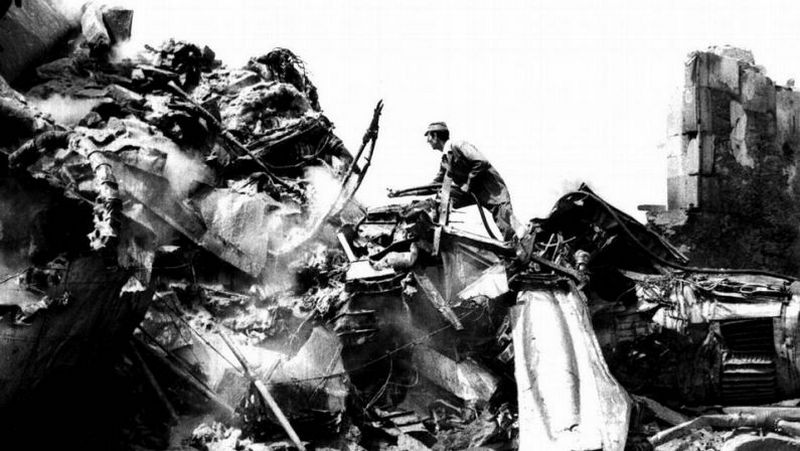
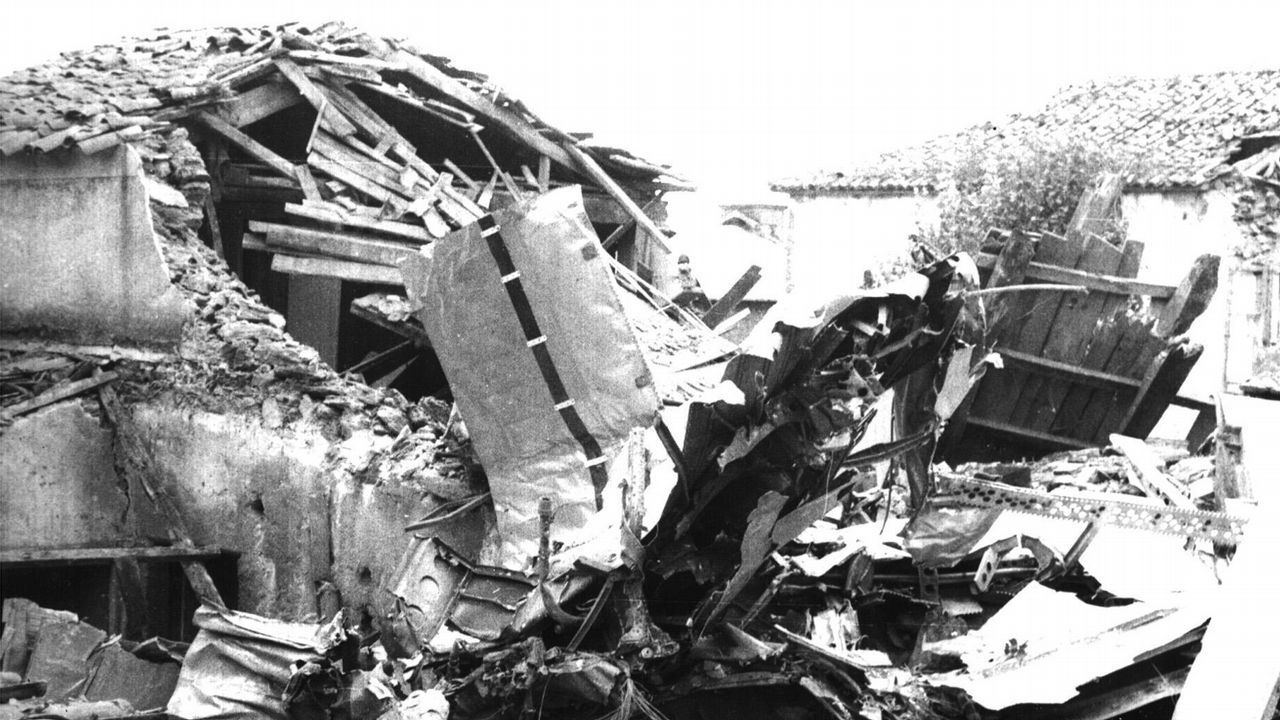
Crash of a Sud-Aviation SE-210 Caravelle 10R off Funchal: 3 killed
Date & Time:
Mar 5, 1973 at 0140 LT
Registration:
EC-BID
Survivors:
No
Schedule:
Madrid - Funchal
MSN:
228
YOM:
1969
Crew on board:
3
Crew fatalities:
Pax on board:
0
Pax fatalities:
Other fatalities:
Total fatalities:
3
Circumstances:
The crew was completing a positioning flight from Madrid-Barajas to Funchal. While approaching the airport by night, the pilot-in-command made a turn to join the runway 06 approach path when the airplane stalled and crashed into the sea few km off shore. The wreckage sank by a depth of 740 meters and was not recovered. All three crew members were killed.
Probable cause:
Due to lack of evidences, it was not possible to determine the exact cause of the accident. Nevertheless, it is believed that the aircraft's speed was probably too low during the last turn, causing the aircraft to stall and to crash. The distance between the aircraft and the water surface was insufficient to expect recovery.
